Fisherman’s rib is currently very hip. While the trend is focussed on the fisherman’s rib, there are other variants of the knitting pattern. I’ll show you how you can knit a nice pattern with half the effort for a true fisherman’s rib. I look closely to the half fisherman’s rib, show you tips and tricks and how to knit increases and decreases in the pattern.
Fisherman’s rib – or brioche – is one of the most popular stitch patterns at the moment. But most people only know the full fisherman’s rib. There are four main types of patent patents: true fisherman’s rib, half fisherman’s rib, mock fisherman’s rib and Netzpatent.
The true and half fisherman’s rib have the distinctive, thick ribs in common. Both are voluminous and warm. You have to knit two rows until you can see a row. As a result, much more yarn is consumed than, for example, in the case of stockinette stitch. The additional yarn creates a zigzag in the depth, which can be seen on both sides.
The pattern is not firm – which isn’t necessarily a disadvantage. It can easily spread in the width and the increased weight can also change the length.
What you’ll learn
Comparison true and half fisherman’s rib
Stitch pattern of half fisherman’s rib
- Cast-on
- Selvedge stitches
- Two different ways how to knit true / half fisherman’s rib
- Half fisherman’s rib in rows
- Half fisherman’s rib in rounds
Decreases in half fisherman’s rib
Increases in half fisherman’s rib
Common abbreviations in Brioche and half fisherman’s rib knitting
brk brioche knit: knit the stitch together with its yarn over
k1b knit one st in the row below
sl1yo with yarn in front, slip the next stitch purlwise and yarn over
Comparison true and half fisherman’s rib
I take a closer look at the true and half fisherman’s rib. Both stitch patterns look the same at first sight. But if you look more closely, the differences are recognizable.
True fisherman’s rib – or brioche
The true fisherman’s rib (1 + 2) looks the same on both sides. It is knitted as follows:
Set-up row (WS): (K1, sl1yo) to last stitch, k1.
Row 1 (RS): P1, brk, (sl1yo, brk) to last stitch, p1.
Row 2 (WS): (K1, sl1yo) to last stitch, k1.
Half fisherman’s rib – or half brioche
The name half fisherman’s rib (3 + 4) expresses exactly what you do: half of the true fisherman’s rib. You knit alternately a row of true fisherman’s rib and a row or round (k1, p1) **.
In contrast to the true fisherman’s rib, the half fisherman’s rib doesn’t look the same on both sides. The “restless” side (4) is the wrong side. The front of the half fisherman’s rib (3) looks similar to the true fisherman’s rib. On the basis of the stitches between the “V” s and the wrong side, however, you can see whether it is a true or half fisherman’s rib.
Stitch pattern
Cast-on
In the case of fisherman’s rib, I recommend the use of a stretchy cast-on such as, for example, the provisional tubular cast-on.
If you knit in rows, cast on an odd stitch number. When you knit in rounds, cast on an even stitch number.
Selvedge stitches
For a simple selvedge stitch, I recommend knitting the selvedge stitches as follows:
Row 1 (RS): P1, […], p1.
Row 2 (WS): K1, […], k1.
If you want a nice edging, like for a scarf or a shawl in a fisherman’s rib, I recommend knitting the following selvedge – like an I-cord edge: don’t knit the first and last 3 stitches in the fisherman’s rib stitch pattern. Knit the knit stitches and slip the purl stitches purlwise with the yarn in front of the work like follows:
Row 1 (RS): Sl1 wyif, k1, sl1 wyif, […], sl1 wyif, k1, sl1 wyif.
Row 2 (WS): K1, sl1 wyif, k1, […], k1, sl1 wyif, k1.
If you’re knitting cardigans or sweaters in a fisherman’s rib, you will need a firm edge to sew the pieces together later. I recommend in this case the first and last stitch to purl. This gives a firm nodal margin. An odd number of stitches is applied to the individual parts. The stitches next to the edge stitches should be purl stitches on the front. With the mattress stitch, you insert the needle in the middle of the purl stitches of the two parts. After sewing, the seam is hardly recognizable as it’s recessed in the knitting fabric.
Two different ways how to knit true / half fisherman’s rib
As with the true fisherman’s rib, the stitch pattern can also be knitted in two different ways: stitched in the row below – also known as the French brioche – or with yarn overs and slipped stitches.
For the stitched in the row below stitches, you drop a stitch. Keep in mind that this causes difficulties with certain effect yarns because the stitch doesn’t drop.
HINT
When the stitches are slipped – no matter if in the row below or paired with the yarn over, the stitches appear only in every second row as V. If, for example, you have to count the rows for a gauge, count the Vs and double the number. This results in the number of rows or rounds you knitted.
Half fisherman’s rib in rows
To knit the half fisherman’s rib in rows, you cast on an odd number of stitches.
Half fisherman’s rib in rounds
To knit the half fisherman’s rib in rounds, you cast on an even number of stitches.
Round 1: (k1, p1) to the end.**
Round 2: (k1b, p1) to the end.
Repeat these two rounds.
HINT
If you work the half fisherman’s rib in rounds with stitches stitched in the row below, you can sometimes forget in which round you are. In this case, look at the knit stitches more closely.
If there are two threads around the knit stitch from the round below, then you should knit the next stitches and you’re in round 1: (k1, p1).
Set-up round: (sl1yo, p1) to the end.
Round 1: (Brk, p1) to the end.
Round 2: (Sl1yo, p1) to the end.
Repeat rounds 1-2.
**Because in fisherman’s rib with stitches stitched in the row below, in every second row / round is every other stitch dropped, it doesn’t matter how you work the stitch to be dropped.
Knitted in rows, this looks as follows: You knit the WS row (k1, p1) or knit all stitches.
Knitted in rounds, this looks as follows: In round 1 you knit either (k1, p1) or purl all stitches.
Decreases in half fisherman’s rib
The half fisherman’s rib (as well as the true fisherman’s rib) is composed of two stitches. To keep the stitch pattern, 2 stitches are decreased simultaneously. The decreases are always worked over k1, p1, k1 stitches on the right side. The last knitted stitch is a purl stitch.
left leaning decreases
right leaning decreases
Increases in half fisherman’s rib
As with the decreases, two stitches are increased at the same time to maintain the stitch pattern. However, compared to the decreases, the increases don’t lean in one specific direction.
Step 1: Insert the right needle in the knit stitch with its yarn over.
Step 2: Knit one stitch – but don’t drop the stitch from the left needle.
Step 3: Make a yarn over.
Step 4: Repeat step 2 once again through the same stitch. After the third stitch has been worked, drop the stitch on the left needle.



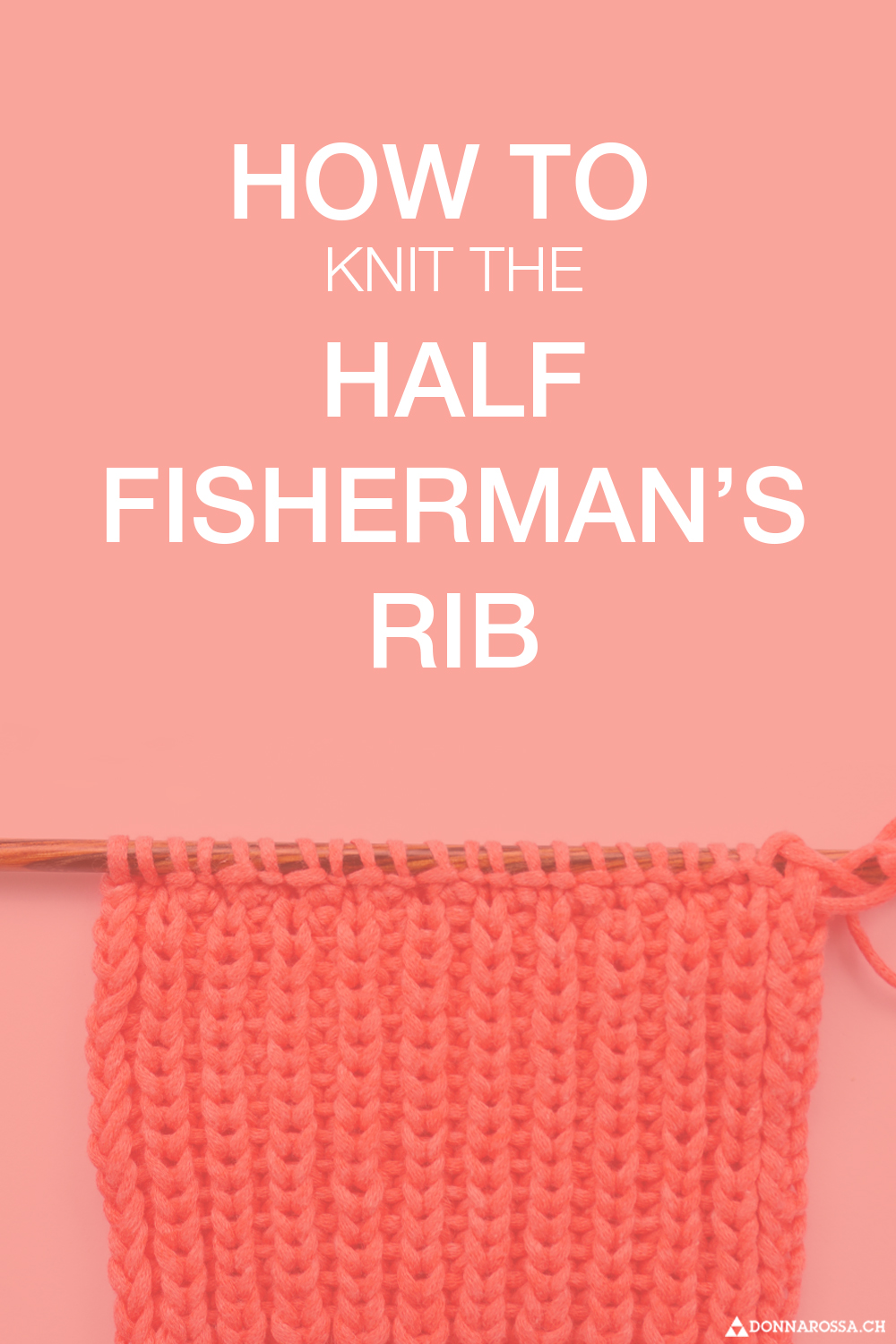
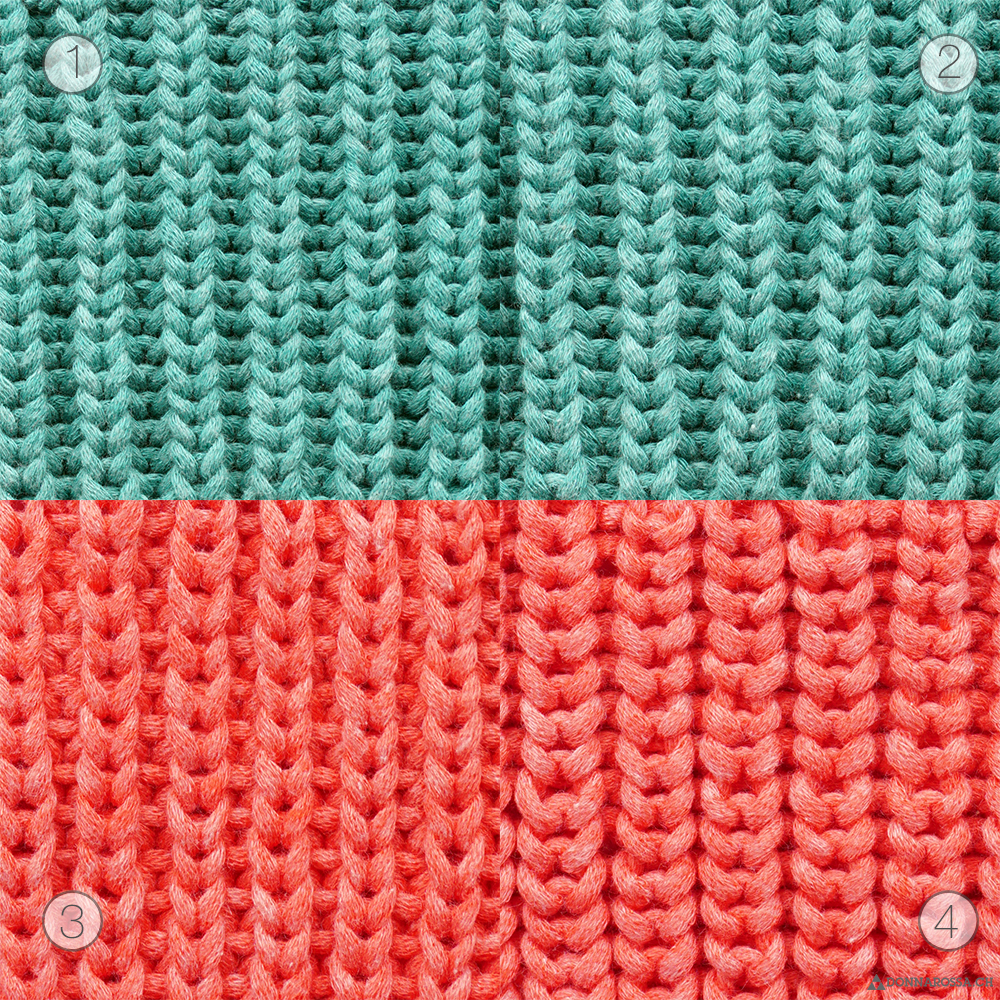
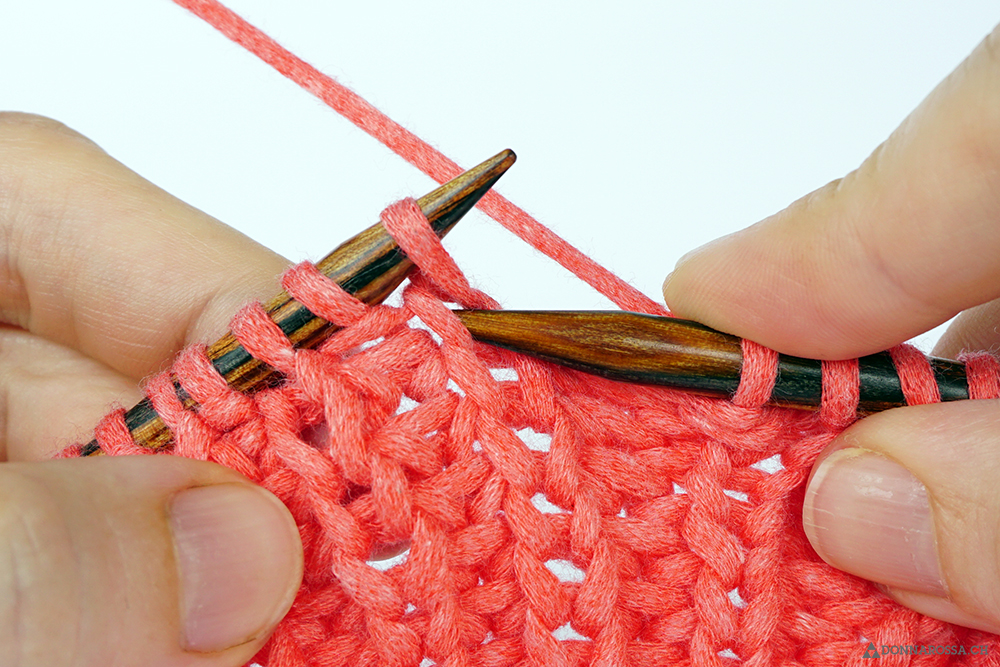
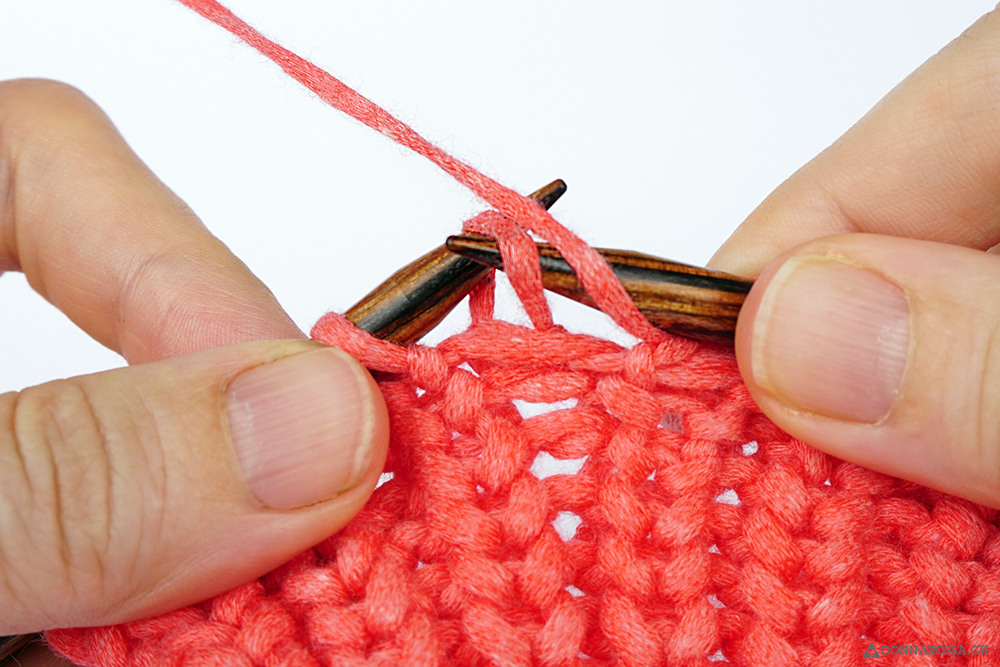
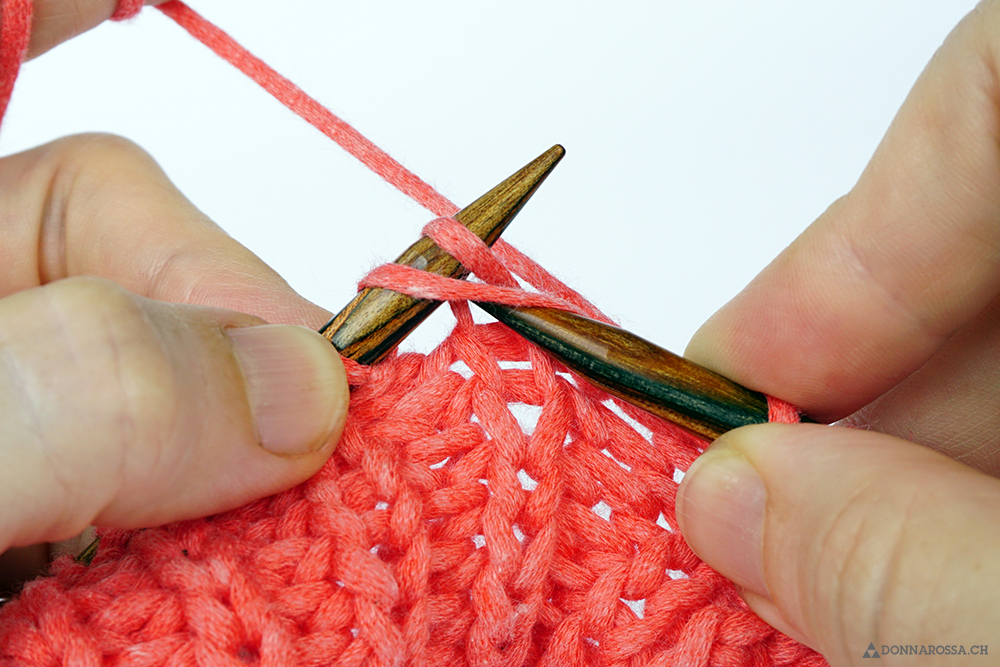
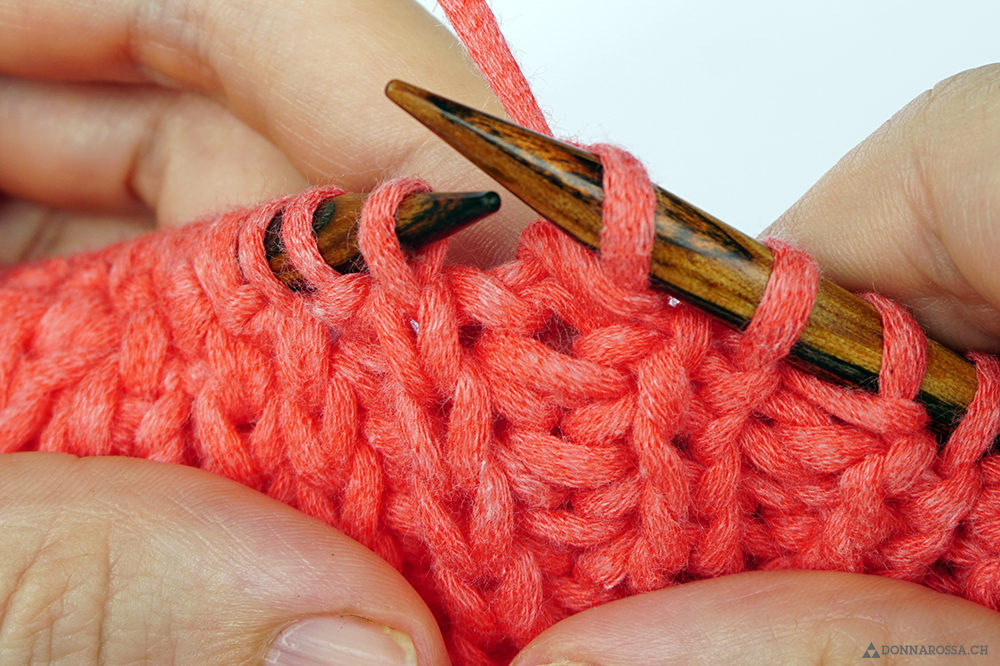
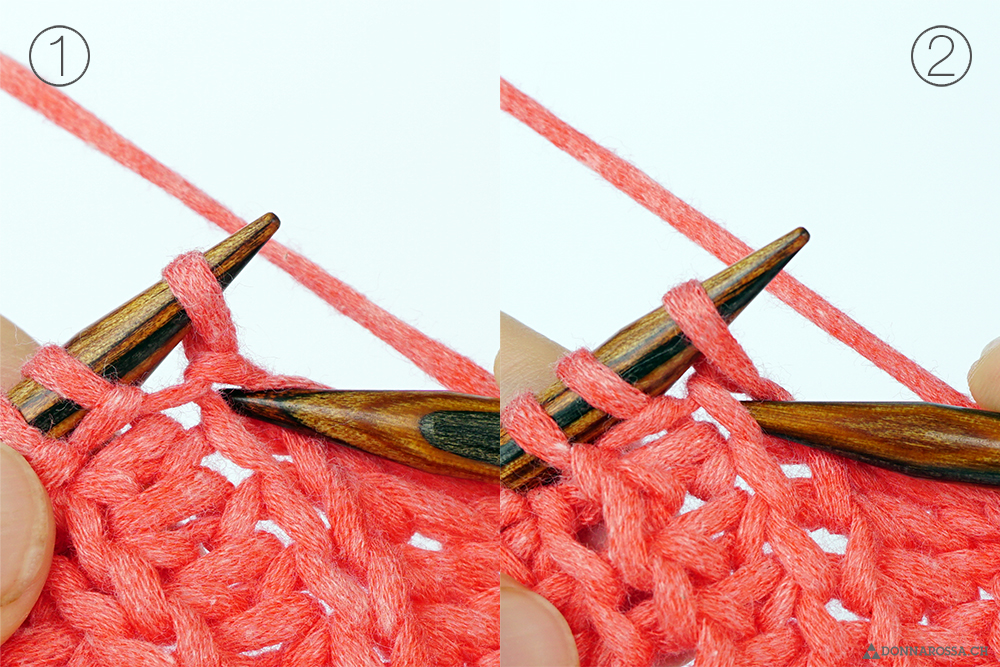
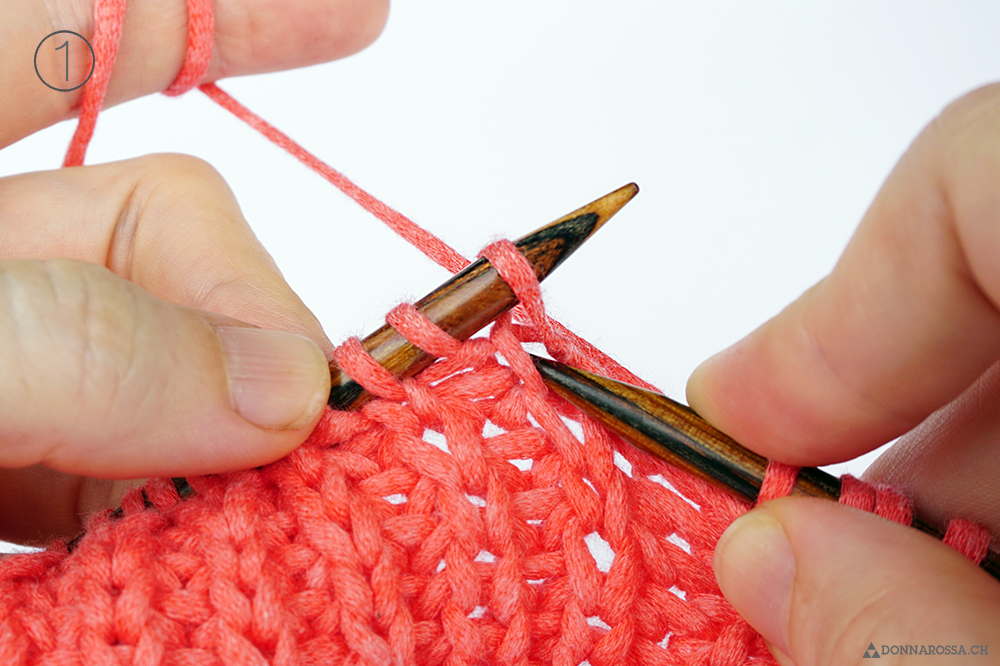
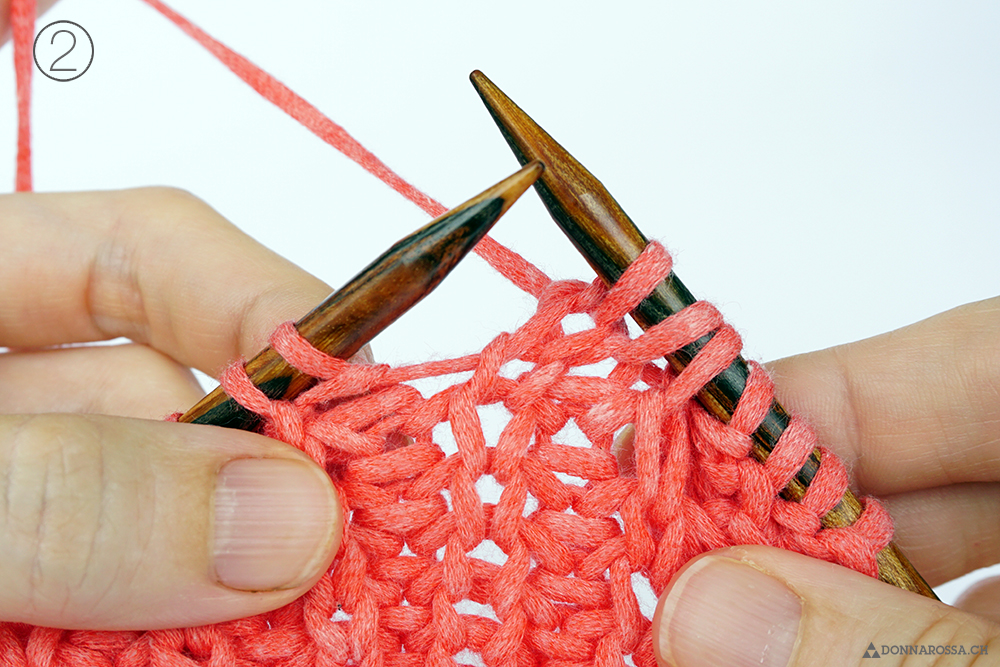

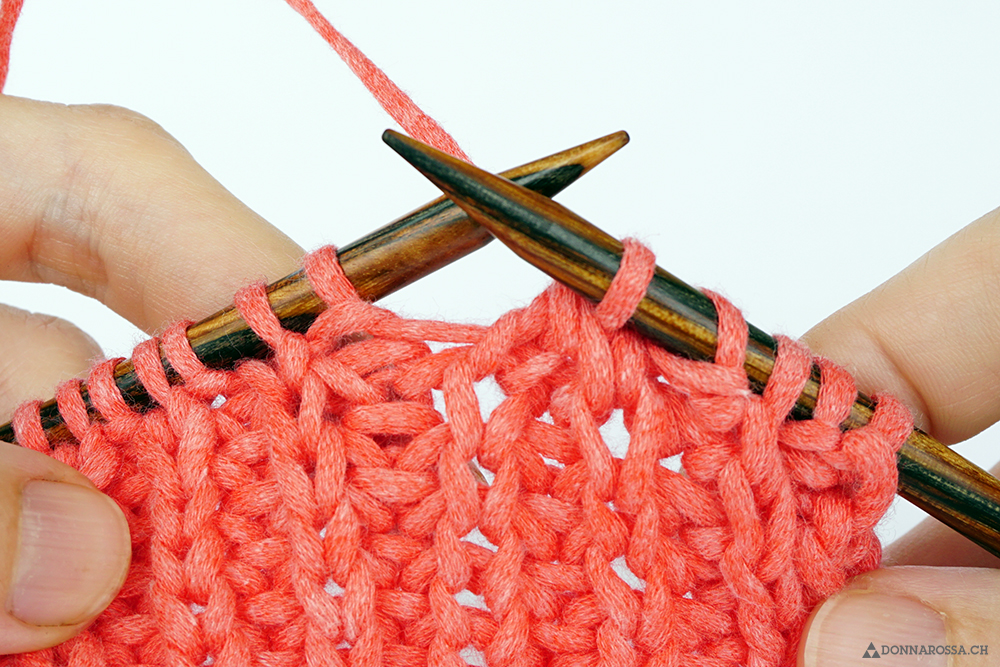
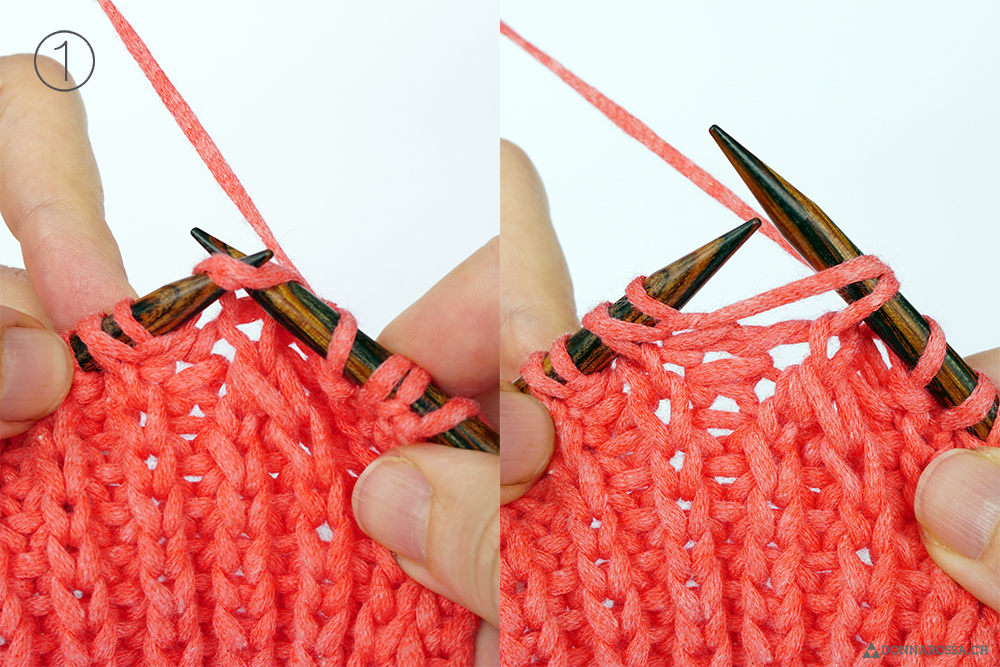
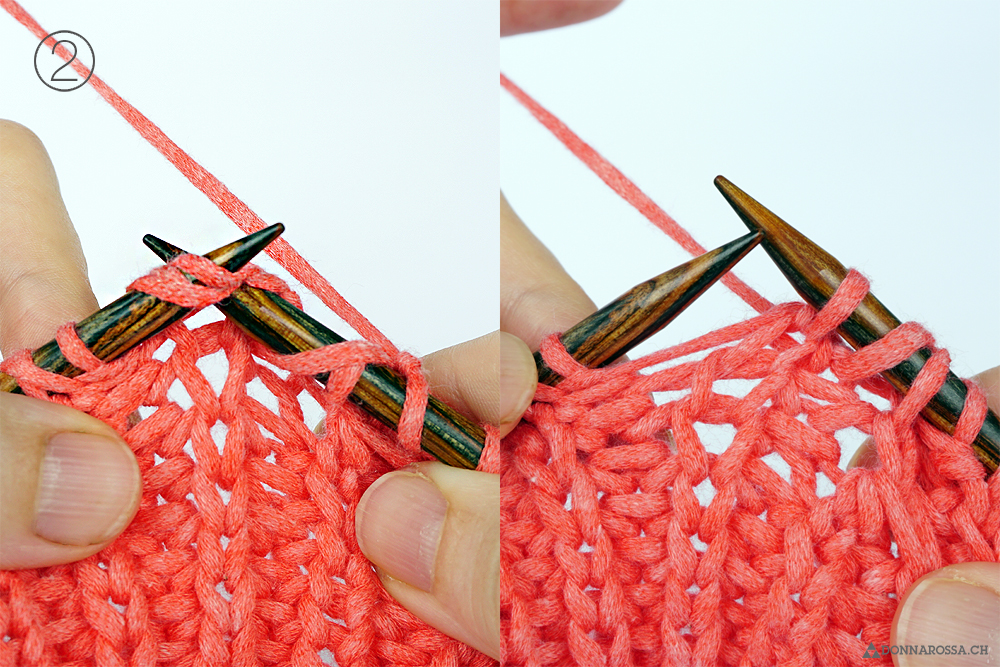
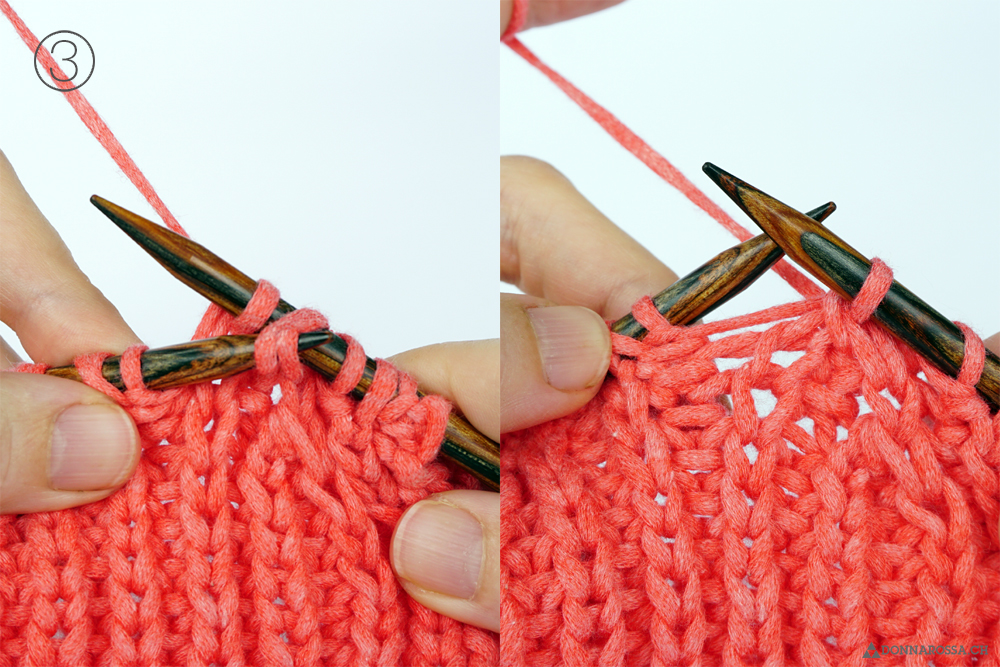
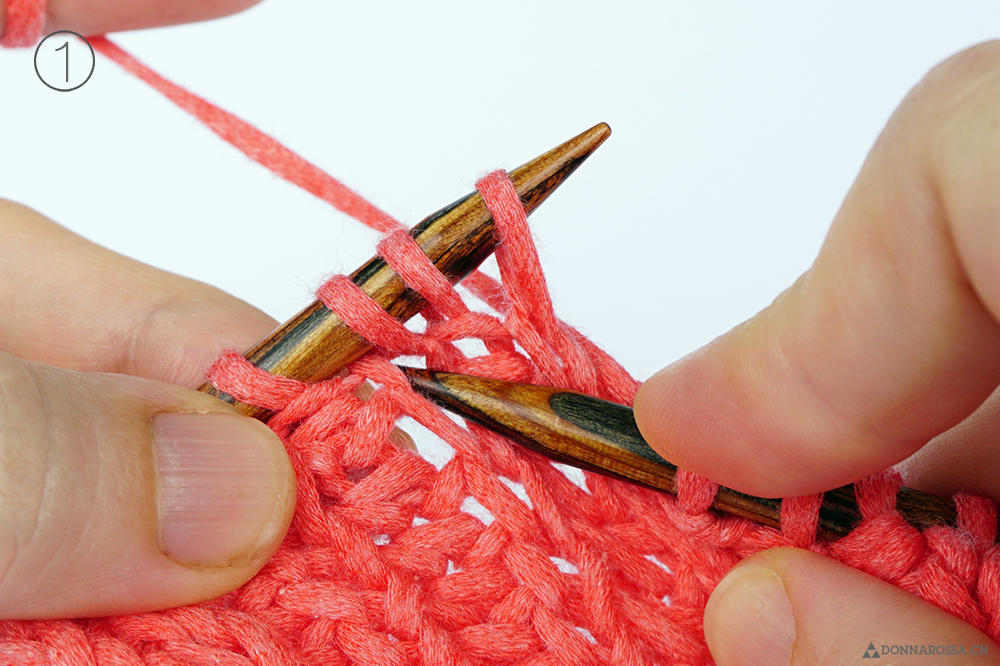
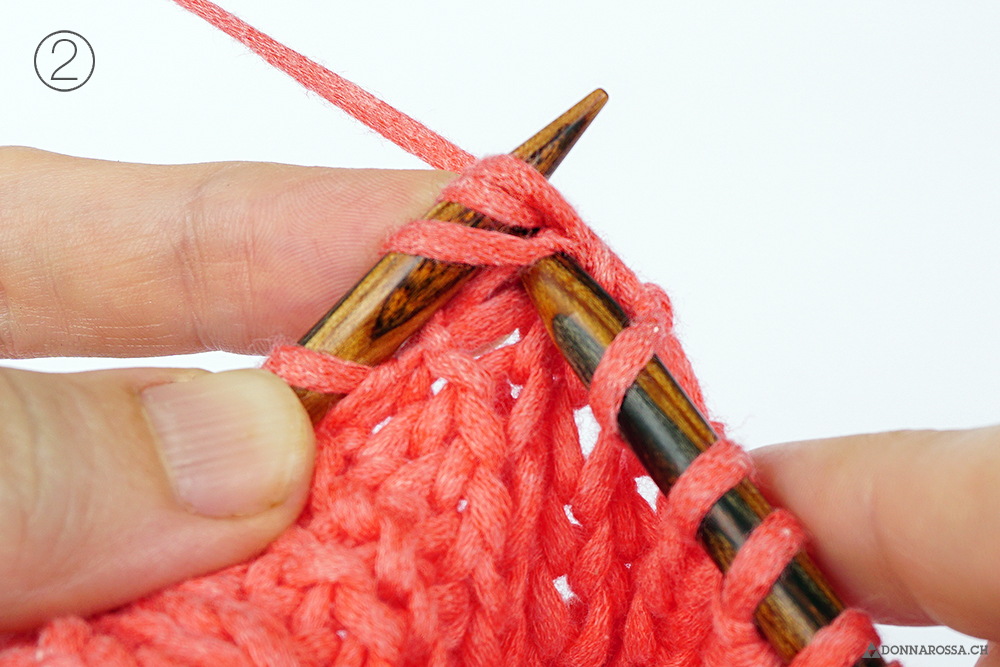
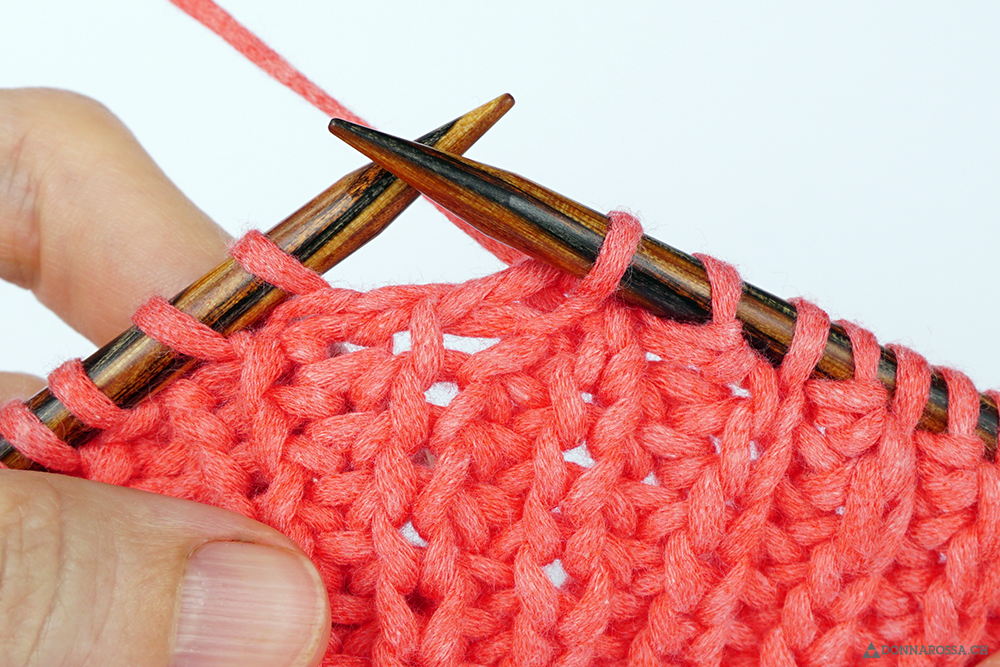
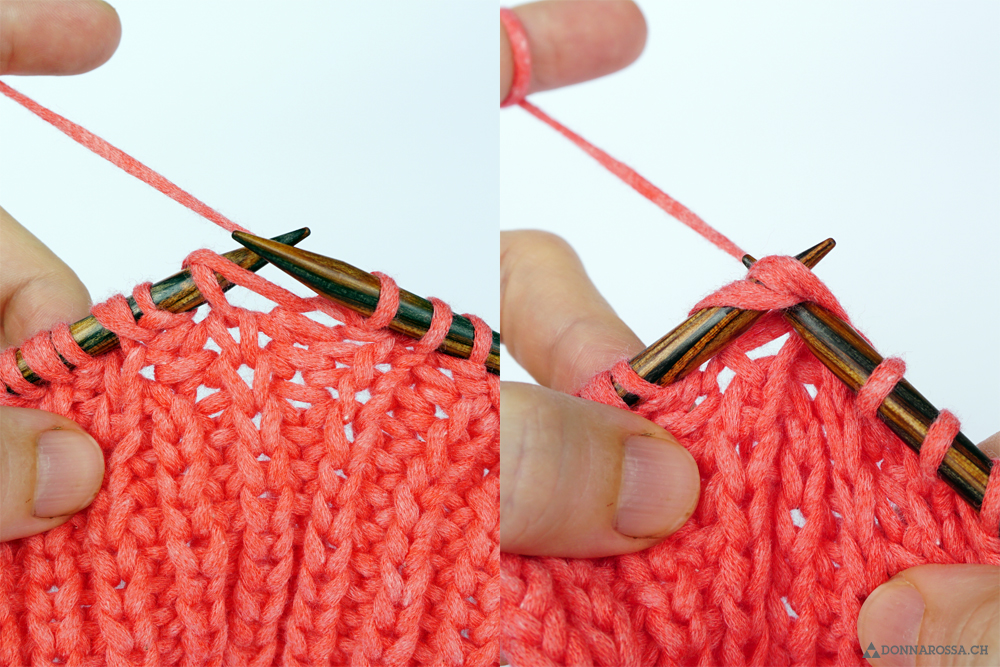
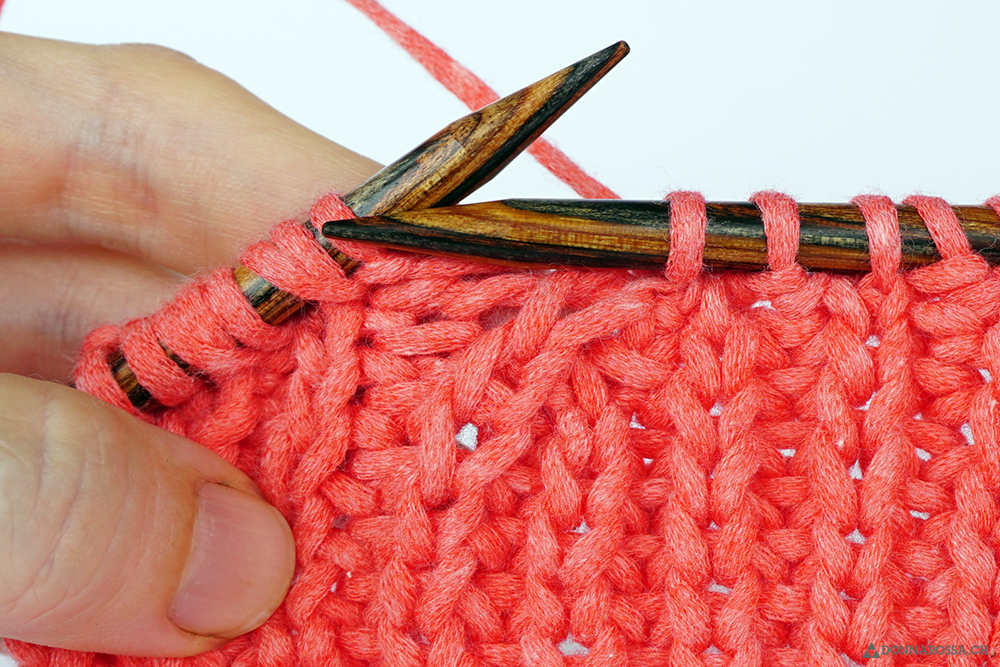
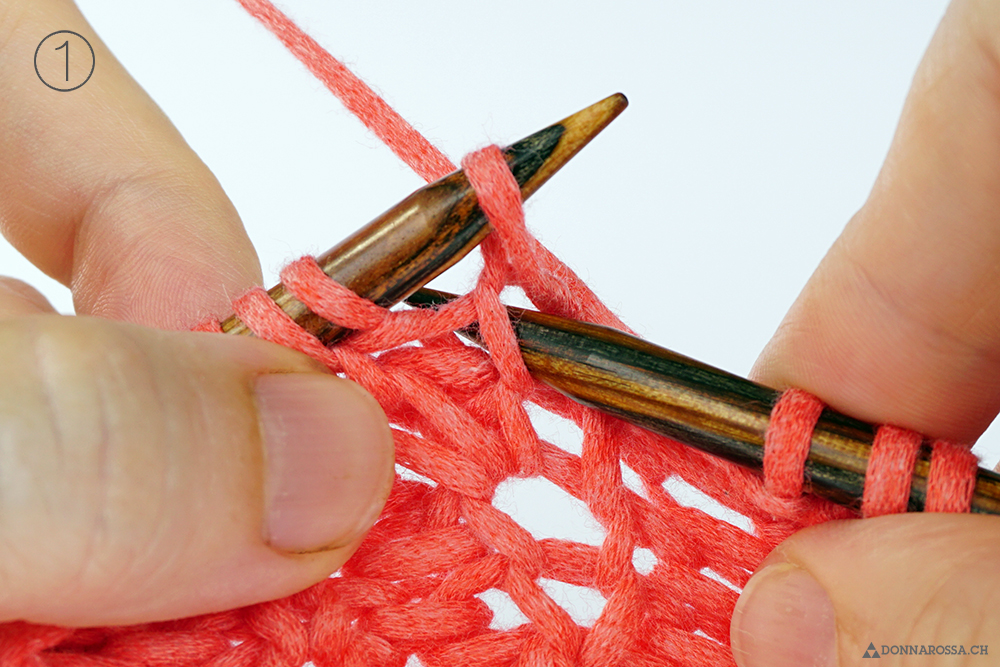
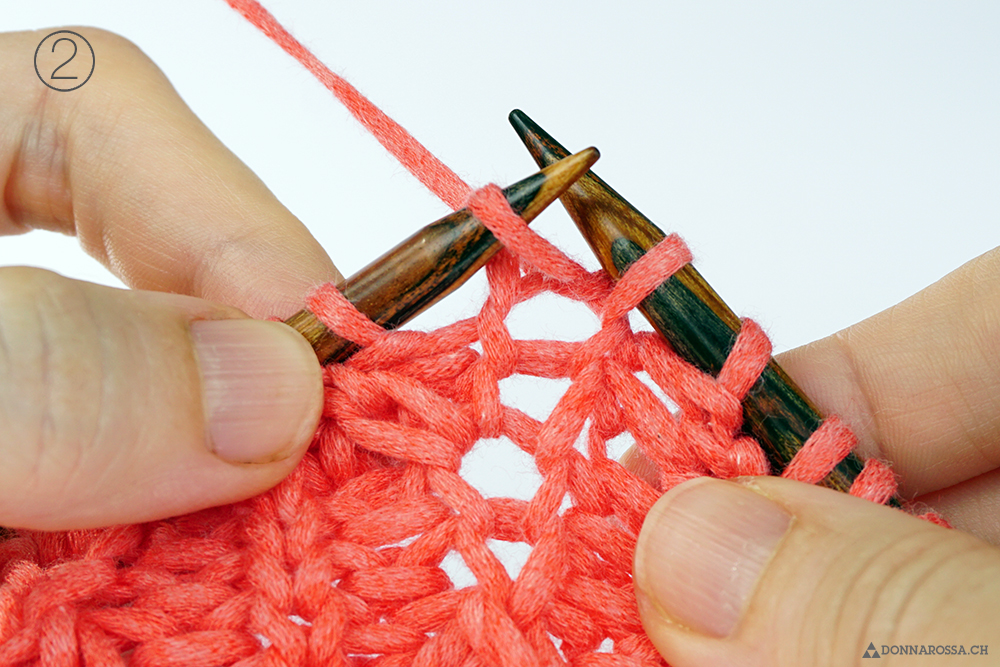

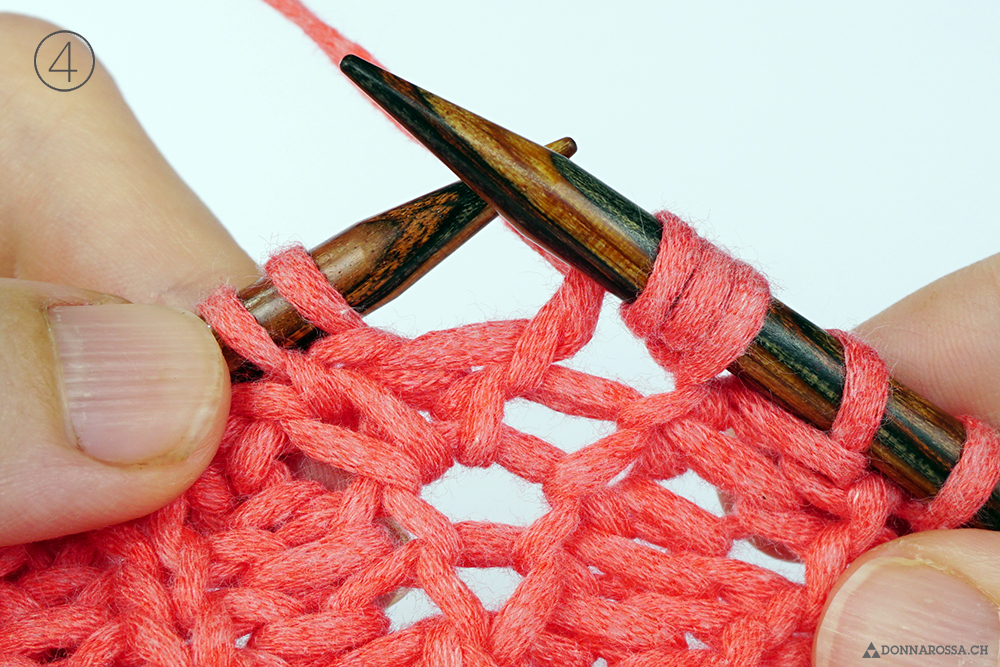
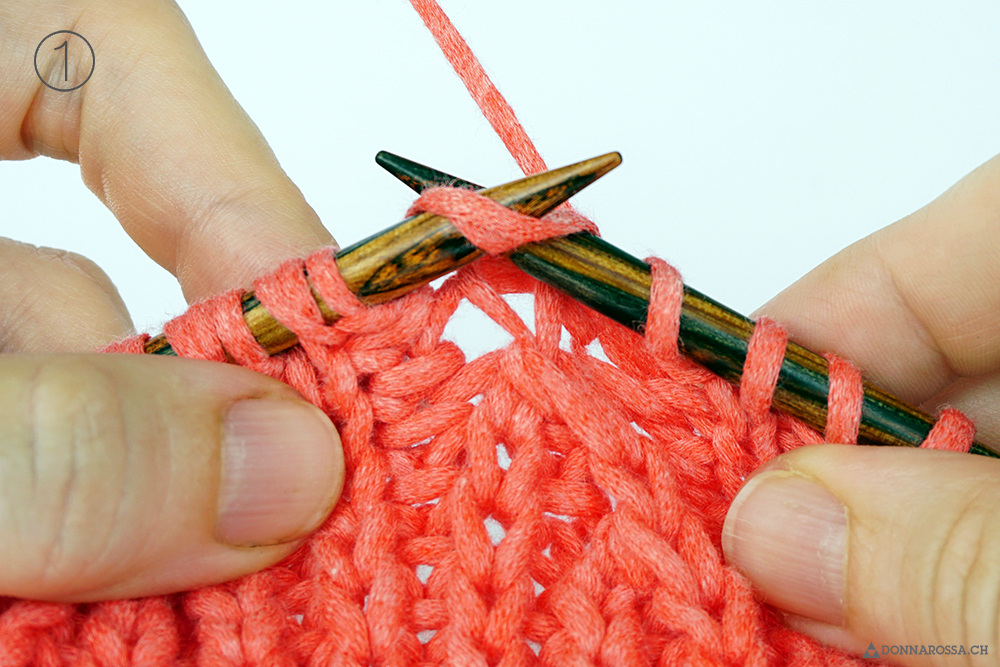
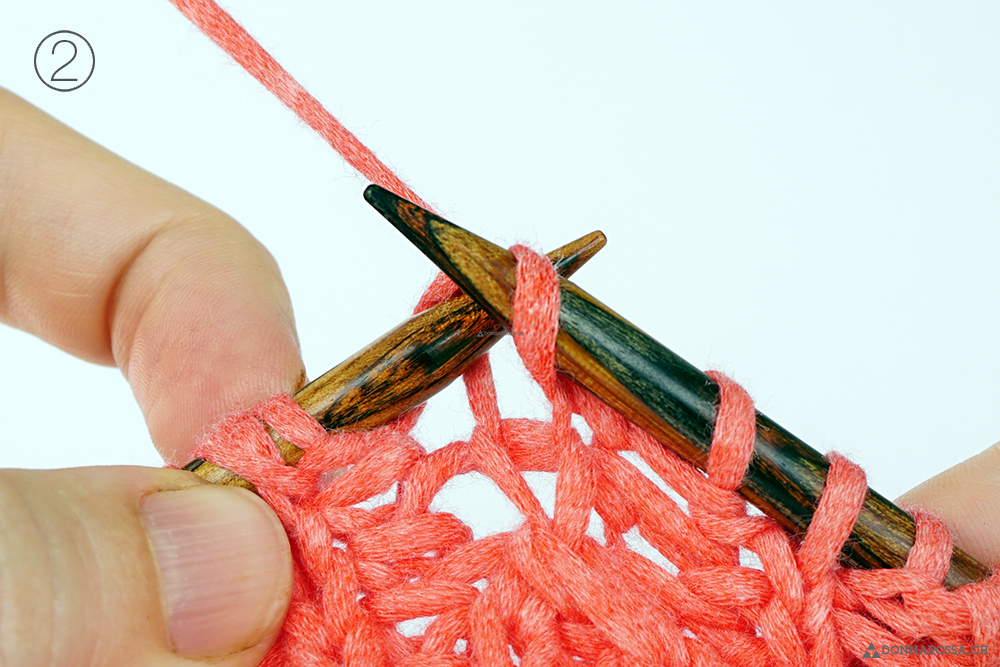
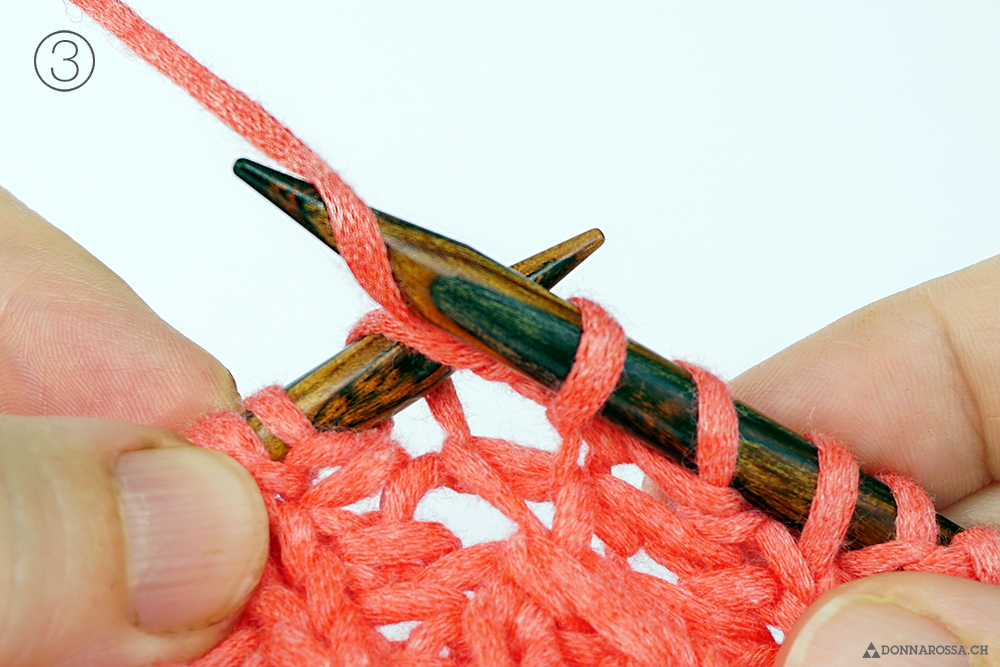
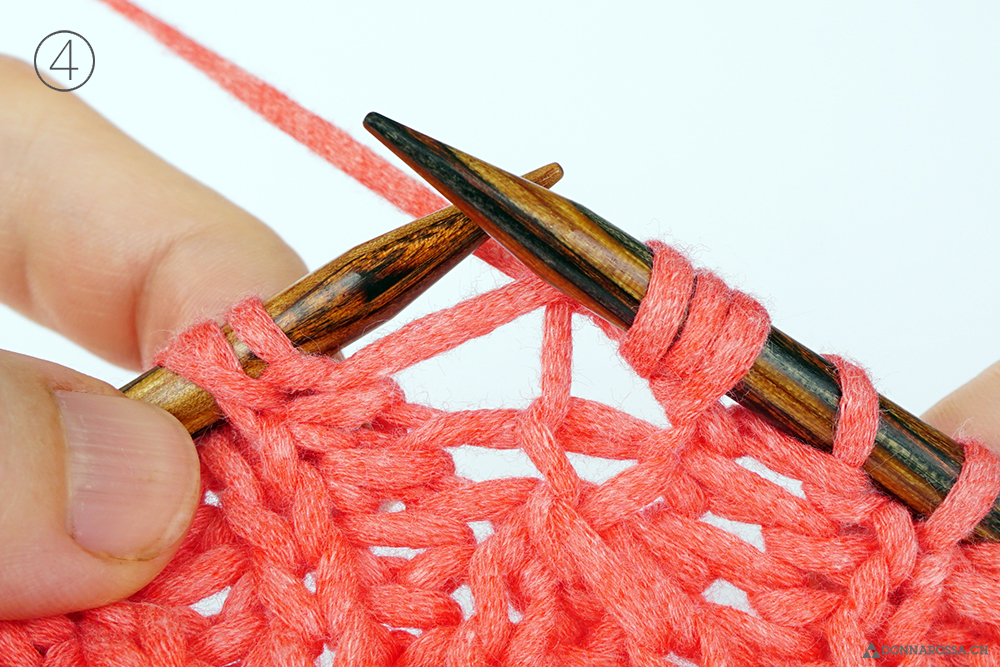
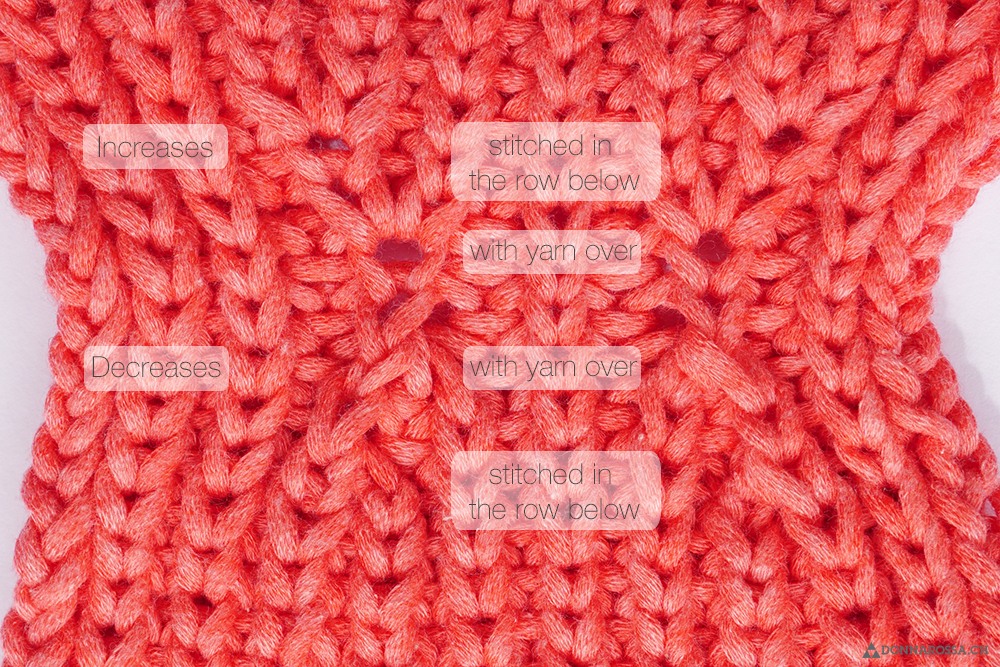
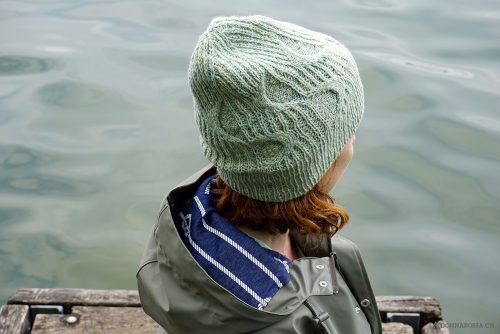
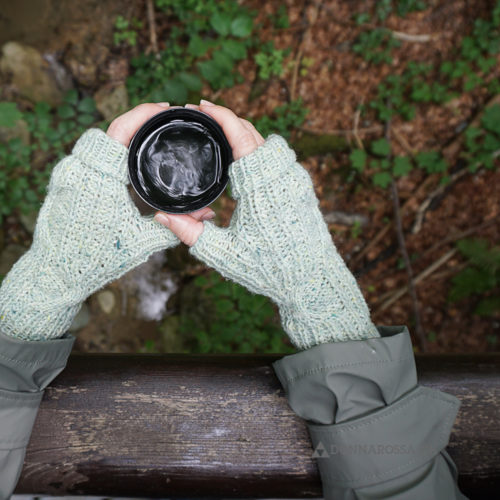
Tone
This page is a great help. Thanks!!
donnarossa
Great,that you like it!
Deepi
Thank you, this is such a helpful post!
donnarossa
I really appreciate your feedback. Thank you :-)
Ranjitha
I don’t see instructions for right leaning decreases. Only left leaning decrease is visiting when I click on the plus sign.
donnarossa
Hi Ranjitha,
the half fisherman rib can be knitted in two ways (in the stitch below or with the yarn over). I listed both ways how to do increases and decreases. When I click the + sign, it will show the matching pictures and description.
The right-leaning decrease is very similar to knit 3 together – tough with either in the stitch below or the yarn overs.
Ulrikka
Hi Donnarosa,
Thank you so much for your information on half fisherman’s rib. I find it difficult to find information about that in general. I want to do a raglan increases in half fisherman’s rib, so I was wondering if I can do increases in the purl stitch on every second row (on the right of the work). I hope you understand my question. I’m not quite sure how to phrase it. It is to het the raglan even.
Sincerely,
Ulrikka
donnarossa
Dear Ulrikka,
I hear you about the information for half fisherman’s rib. I faced the same issue :-)
When it comes to increases, I would always do them in the “knit” stitch as you will increase two stitches. With this type of increase, the “knit” column is highlighted.
If you want to increase in purl stitches (in a purl column), then I would work a “pyop” in the same stitch: purl, leave the stitch on the left needle, yarn over, purl in the same stitch. I’ve never done that before in a half fisherman’s rib though. Maybe you should swatch it and check, if you like it.
For raglan increases in brioche (or half fisherman’s rib), I would set 3 stitches for the raglan (1 purl, 1 knit and 1 purl column). Before and after these 3 stitches I would work the increases. (You could also do just one purl stitch for the raglan line, but in my experience this produces a harder raglan line then my previous suggestion.)
Let me know if that answers your question or if you need further assistance :-)
Sabrina
Ulrikka Rueskov Honoré
Thank you so much for your answer. So you would do the increases on both sides of the raglan? So that you increase with 4 stitches around each raglan line instead of the two that are more normal? I can see that that would solve the problem of an uneven raglan line, I just thought that perhaps it would be too many increases
donnarossa
I wouldn’t work the increases every other round if I would increase on both sides of the raglan line. Instead, I would work the increases at least in every 4th (or more) round. It depends on how many stitches you want to increase.
And yes, the increases can be done not equally (on body and sleeve stitches). It really depends on your calculations and measurements. And your preferences of the shape of the raglan line.
Dorien
Hi, thank you for this very clear guidelines!!
I have one question before I get started on knitting a hat: when casting on with the tubular cast on, the stitches are already defined as knits or purls. You recommend to knit a selvedge stitch and then start with k1, p1 for the first row. If I knit the first stitch, the second stitch is supposed to be a purl stitch according to the stitches that were cast on. Can I just ignore that and follow your instructions for the first row, or do I have to switch all knit & purl stitches starting from the second stitch?
Thanks!
Dorien
donnarossa
Hi Dorien,
when knitting half fisherman’s rib in rounds, you don’t have a selvedge stitch. So you start straight with the k1, p1.
BUT, when you start with the tubular cast-on (I wrote a tutorial to this technique https://donnarossa.ch/how-to-knit-the-provisional-tubular-cast-on/), I would recommend knitting first the 4 (or at least 2) foundation rows. Because this cast-on can get really fiddly in the first round. There you start with a purl stitch as the first stitch. When joining into the round, just move the beginning of the round one stitch ahead. Nobody will notice.
Hope that helps and makes sense :-)
Have a great day
Kate
Any thoughts on two color half brioche in the round? Trying to figure it out as I’ve seen it done and it’s just not clicking for me. Thanks!
donnarossa
Hi Kate,
for working two-coloured half brioche in the round, you use the same instructions as for knitting half brioche (one-coloured) and switch colours every round as follows:
Set-up round: With light/foreground colour, (sl1yo, p1) to the end.
Round 1: With dark/background colour, (brk, p1) to the end.
Round 2: With light/foreground colour, (sl1yo, p1) to the end.
Repeat rounds 1-2.
Let me know, if that answers your question :-)
Jan
Hi
When I have done fisherman’s rib, it is very difficult/ impossible to unpick because of the complexity of the stitch, so I have run a spare piece of wool through the stitches every so often.
Is this the same with the half Fisherman’s rib?
donnarossa
It’s never wrong to use lifelines. The stitch is very similar to fisherman’s rib, but as the title says, only half as difficult.
ngaire
Hello, I’m using a pattern which was written for Half fisherman’s rib, but I am kitting it in Full fisherman’s rib. If the pattern says knit 20 rows Half fisherman’s rib, would I knit 20 rows of Full fisherman’s rib?
Many thanks!
donnarossa
Depends on your gauge. But very likely, I would knit also 20 rows in full fisherman’s rib. Maybe there’s a schematic which tells you in cm or inches, how long that section should be?
Claire
The instructions for increases isn’t displaying for me. Is any one else having this problem?
donnarossa
Hi Claire,
try clicking on the “+” next to the increases and the instructions will fold up.
Melanie Gillette
Just found this and thank you for all this information so clearly presented. I’m looking to convert an in the round design to be knitted flat to provide more structure. What type of selvage stitches should I use to accommodate seaming?
donnarossa
Hi Melanie,
thank you. Glad it’s helpful.
For the selvedge stitch, I would use a “normal” selvedge stitch. I would knit/purl that stitch in every row. I don’t like slipped stitch edges for seaming.
When sewing together, you use the mattress stitch. Usually you stitch between the selvedge stitch and the next stitch. So the seam lies 1 st from the edge. However, remember to stitch 1.5 sts instead of 1 st when doing the mattress stitch in a brioche stitch pattern. This will make the seam practically invisible.
Angela
Hi! I found this page to be incredibly helpful for learning half fisherman rib. I had a quick question about what yarn you used for the examples? I love the texture that it creates. Thank you!
donnarossa
Hi Angela,
I’m happy to help.
I posted this tutorial quite some time ago. Honestly, I don’t have the yarn or the label anymore. So far I remember, it was from Schachenmayr.
Have a great day!
Sabrina
Charlotte
Thank you for the extensive explanation. I have one question, as I am a fairly new knitter.. With half fisherman’s rib in rows you said:
Row 1 (RS): P1, (k1b, p1) to end.
Row 2 (WS): K1, (p1, k1) to end.
But my pattern and a lot of different YouTube videos say all knitting (K1) for row 2 instead of k1,p1,k1, etc.
Can you explain to me why you choose this?
donnarossa
Hi Charlotte,
You can knit in both ways the WS row. Either options are fine. I prefer k1, p1 because in the RS rows I can read better the stitches where I have to knit 1 stitch below.
So my advice: do whatever works better for you.
Have a great day
Sabrina
Ann
What is brk?? Is it supposed to be k1b?
donnarossa
brk is “brioche knit”. You slipped the stitch with a yarnover in the previous round (or row). Therefore there is the stitch with its yarnover and you treat that as one stitch. So, when it comes to brk, you knit the stitch with its yarnover.
k1b means “knit 1 below”. You insert the needle in the stitch 1 row/round below.